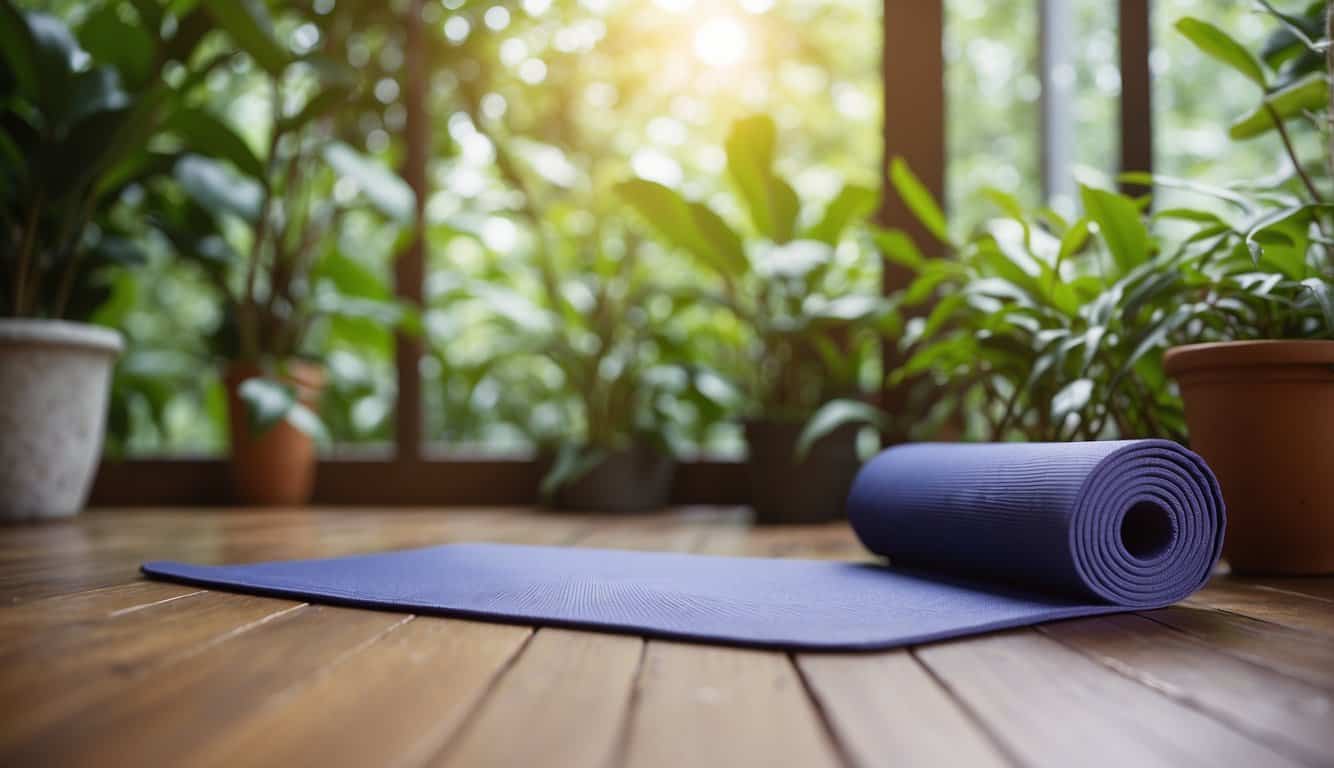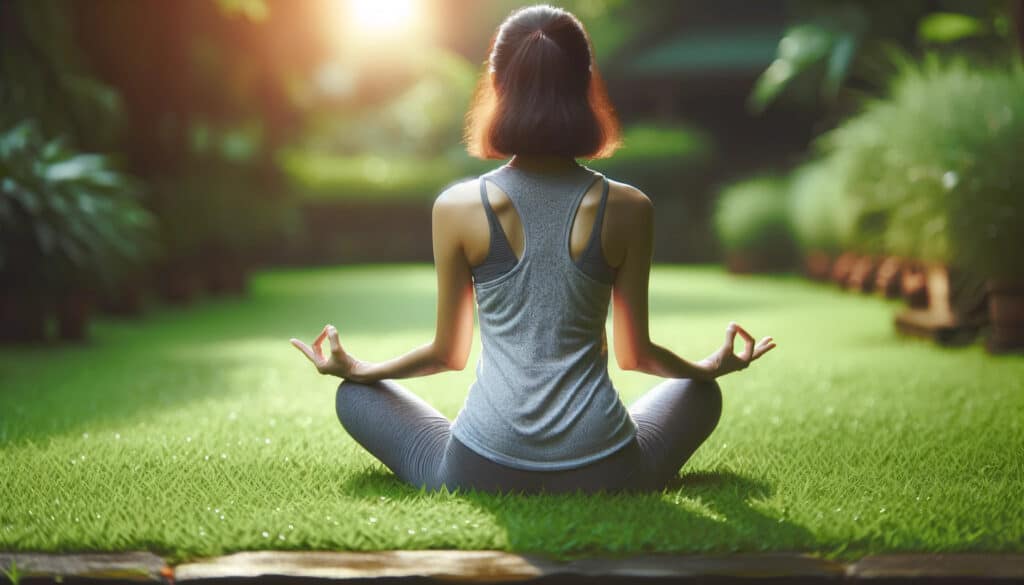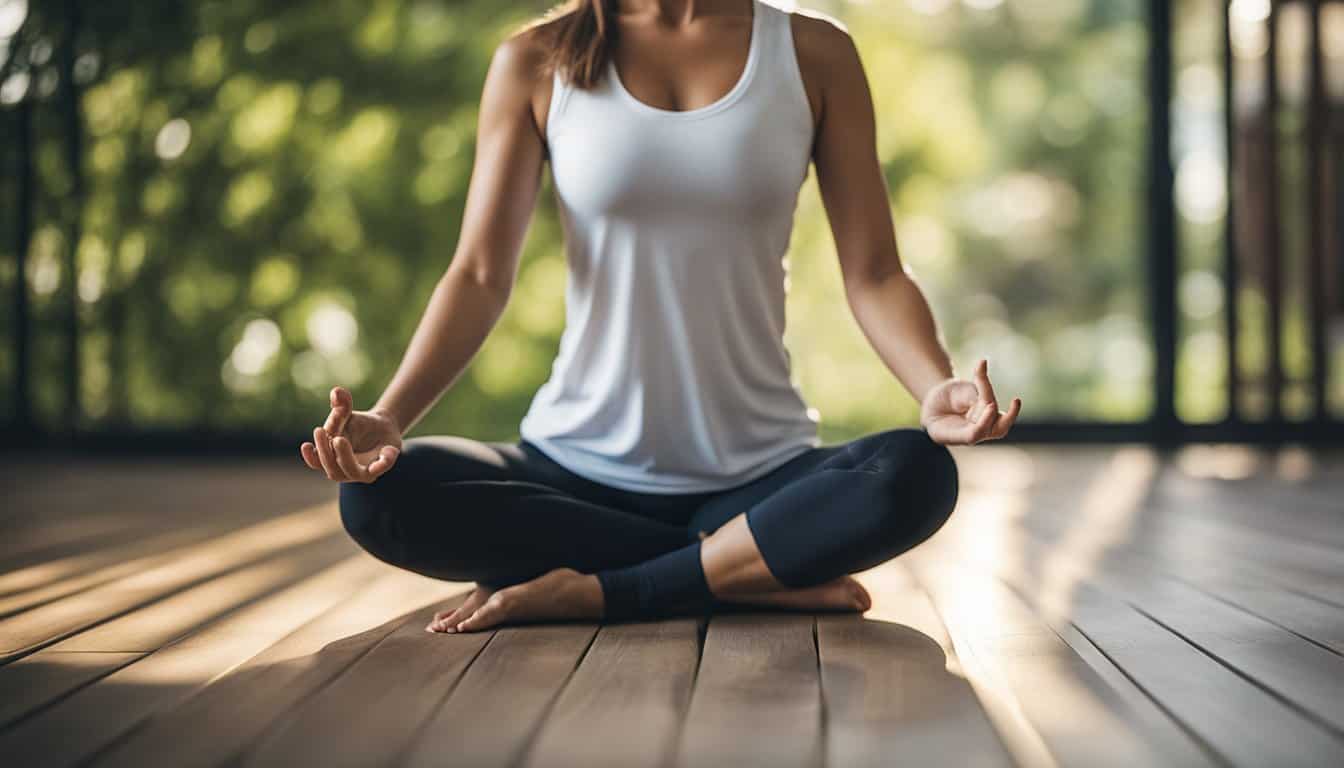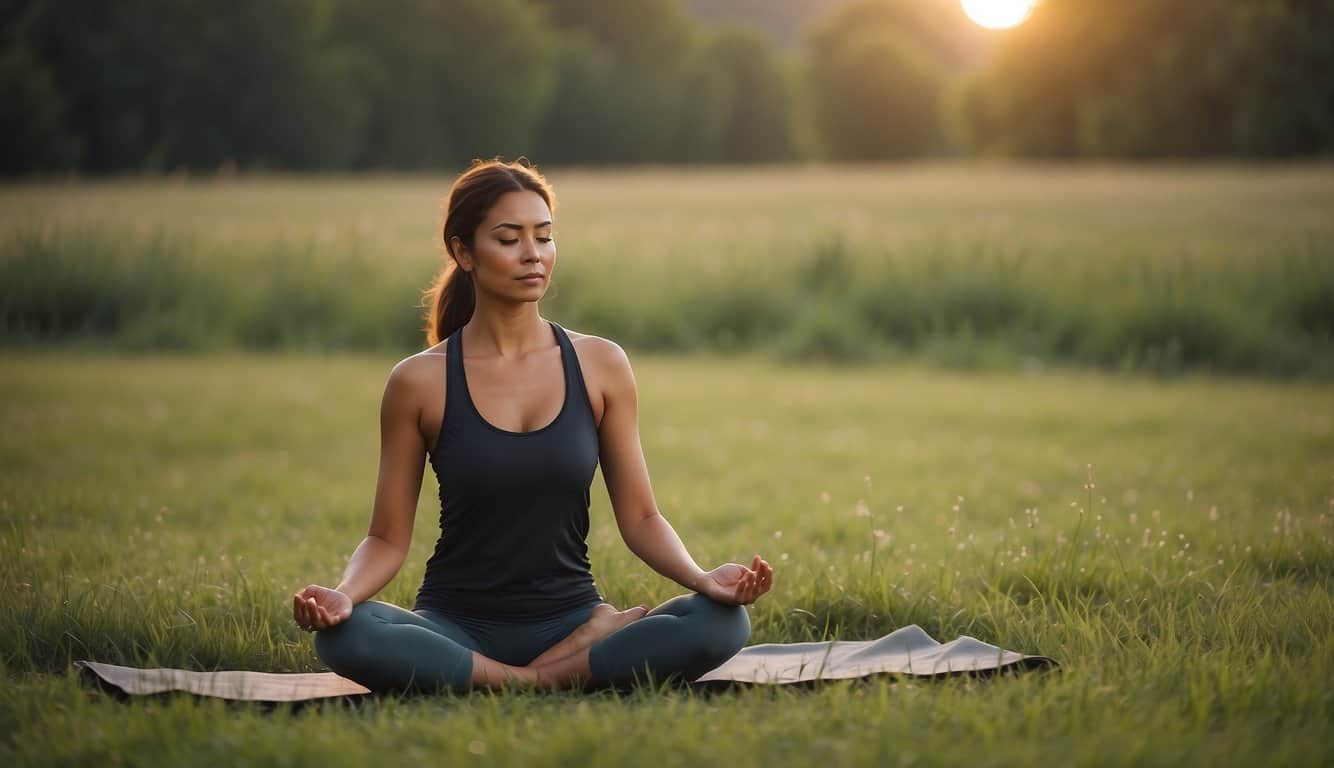When practicing yoga, a common question is whether a yoga mat is necessary.
While yoga mats are ubiquitous in studios and touted for their stability and comfort, they are not an absolute requirement for a yoga practice.
Some yogis find creative ways to practice without a mat, using alternatives or embracing the simplicity of their body and the floor.

Exploring yoga without a mat can open up new perspectives on your practice. You might find that without the stickiness of a mat, you engage different muscle groups, honing balance and strength in new ways.
Whether in a pinch without your usual equipment or experimenting to see how it feels to practice on different surfaces, you can still enjoy a fulfilling yoga session.
Though mats are beneficial for preventing slips and offering padding, they are not the sole means of a successful yoga session.
Key Takeaways
- A yoga mat is not essential for practicing yoga.
- Practicing without a mat can influence muscle engagement and balance.
- There are various surfaces suitable for yoga without a mat.
Understanding Yoga Mats and Their Role in Practice

When you step into the world of yoga, you quickly discover that your yoga mat is more than just a piece of equipment. It’s your space for practice, offering both physical and psychological support.
The Purpose of a Yoga Mat
Your yoga mat serves a foundational purpose. It provides a stable, non-slip surface that helps prevent injuries during yoga practice. Especially when performing poses requiring balance and precision, a sticky mat ensures you stay in place, maintaining your alignment and posture.
When Mats Became Essential
Though yoga has existed for centuries, using a specific yoga mat is relatively recent. As yoga evolved, especially in Western countries, it became clear that a dedicated space aids in practice. The sticky mat became popular in the 1980s when yogis recognized its benefits for traction and safety, making it an essential tool for modern yoga enthusiasts.
Varieties of Mats and Their Materials
Yoga mats come in various materials, each catering to different preferences:
- PVC: Offers great stickiness and durability.
- Natural rubber: Eco-friendly and provides excellent grip.
- Others: Include jute and cotton, providing unique benefits like breathability and natural textures.
If you don’t have a yoga mat, consider alternatives like towels or carpets, but remember that they may not offer the same grip and support as a purpose-made mat.
Yoga Mat Alternatives

While a yoga mat is commonly used for practice, several viable alternatives exist, whether you’re looking for a more natural experience or want to utilize items around your home.
Natural Surfaces for Yoga Practice
Practicing yoga on natural surfaces allows you to connect with the earth and may enhance your experience. If you prefer to feel the ground beneath your feet, consider doing your yoga barefoot on grass. The natural cushioning of the earth can be quite supportive. Similarly, sand offers a soft, forgiving surface, which can be especially comfortable for seated or lying poses.
- Grass: Ideal for grounding and balance-focused asanas.
- Sand: A natural cushion that adapts to your movements, suitable for beach yoga sessions.
Household Items as Substitutes
If you’re indoors and need a quick yoga mat substitute, look no further than your household items. A rug can be an excellent alternative, providing ample space and support. Without a yoga mat, a carpet often offers the necessary cushion for your joints during a slower-paced or meditation-focused practice. Use cushions to protect your knees or bolster your poses for additional support.
Cushion: Use additional support in various poses or elevate the hips during meditation.
Sustainable and Eco-Friendly Options
In your search for an eco-friendly yoga mat substitute, consider 100% natural cotton rugs. They are biodegradable and provide a sustainable option for your practice.
These are gentle on the environment and offer a soft and absorbent surface, which can be particularly advantageous during a sweaty hot yoga session.
Handmade Organic Cotton Yoga Mat
Eco-friendly and sustainable Yoga mat. It is crafted from 100% organic cotton without harmful chemicals, so kind to the environment. It is a breathable, hygienic mat, ideal for various exercises, including hot yoga.
Handwoven by Indian artisans, it offers durability and supports fair-trade practices and job creation in rural communities.
Is It Bad to Do Yoga Without A Mat?

When you practice yoga without using a yoga mat, your approach to posture, balance, and safety may experience notable changes. Since mats often provide a non-slip surface, you must adapt to maintain stability and protect yourself during practice.
Impact on Posture and Balance
Engaging in yoga without a mat can significantly affect your posture and balance. Mats are designed to prevent slipping and improve stability during standing poses, like Tadasana (Mountain Pose) or Vrksasana (Tree Pose).
Without the mat’s grip, you may find it challenging to maintain poses that require a firm plant of your feet or hands.
Additionally, the absence of cushioning can make it harder to hold poses for extended periods, as the pressure on joints such as the elbow and knee increases on a hard surface.
Safety Considerations – Practice Yoga Without Getting Injured
Safety is a crucial consideration when doing yoga without a mat. Without the cushioning and traction provided by a mat, there’s an increased risk of injury from slipping or falling, especially if you have sweaty hands or feet.
Moreover, practicing on a firm surface without proper support might strain joints and muscles.
To reduce this risk, you could opt for a non-slippery surface, like a carpeted floor, which may offer some cushion and grip, albeit not as effectively as a yoga mat. It’s essential to be mindful of body alignment and choose poses that are less likely to cause injury when done without a mat.
Yoga Without a Yoga Mat: Making the Practice Work for You

Practicing yoga without a mat can be liberating and convenient, especially when you adapt your routine to different environments or when you’re on the move. You can enjoy a fulfilling practice anywhere, anytime, by making a few adjustments.
Adapting Your Yoga Routine
When you choose to practice yoga without a mat, you’ll need to consider the type of surface you’ll be using. This could range from a carpeted floor to a grassy patch in the park.
Without a mat’s cushioning, your muscles work harder to maintain stability and alignment, enhancing your strength and focus. Prioritize poses that require less support, such as standing postures, and be mindful of transitions to maintain safety.
For your core routine:
- Start with standing poses like Tadasana (Mountain Pose) or Vrksasana (Tree Pose).
- Integrate gentle floor poses that do not require much sliding or risk of slipping.
- Incorporate balance poses, as they often need minimal space and no mat.
Yoga on the Go
You might not have your mat with you during a lunch break at work or while traveling. Here, creativity comes into play. Look for a spot that offers some grip.
A grassy lawn, a carpeted area, or even a towel on a hotel room floor can be an impromptu practice space. Embrace the freedom to perform simple stretches and poses that fit your break time.
A sample on-the-go routine might be:
- Seated stretches to release tension in the neck and shoulders.
- Standing poses utilizing a wall or chair for support if available.
- Breathing exercises to restore energy and focus for the rest of your day.
Insights from Yoga Instructors
When you step onto a yoga mat, you’re participating in a practice that has evolved through the expertise and traditions of countless yogis. Here, experienced instructors share insights on the role of a mat in yoga and how it’s possible to teach yoga without them.
Advice from Experienced Yogis
You might wonder if a good yoga mat is essential for a yoga practitioner. Many instructors agree that mats are not mandatory but provide several benefits. A good yoga mat can offer:
- Stability: A sticky surface helps you maintain poses without sliding.
- Comfort: Cushioning for your joints during various asanas.
- Hygiene: A personal space that keeps you off the public studio floor.
Experts emphasize that a mat may enhance your practice, but dedication and technique ultimately matter. The right mat can also delineate your personal practice space, which psychologically reinforces the habit of regular yoga sessions.
Teaching Yoga Without Mats
When instructing yoga, teachers often face the challenge of students not having a mat. Yoga teachers then focus on imparting techniques that are safe and effective on alternative surfaces, such as:
- Carpet: It provides some grip and cushioning.
- Grassy Outdoors: Where the earth itself offers a natural mat.
- Hardwood Floors: In a yoga studio, cleanliness is maintained and the floor is even.
Yoga instructors highlight the importance of adapting poses and guidance to ensure safety when mats are unused.
They advocate for students to be mindful of their body alignment and to engage the right muscles to prevent slippage or injury, ensuring that the essence of yoga remains accessible to all, mat or no mat.

